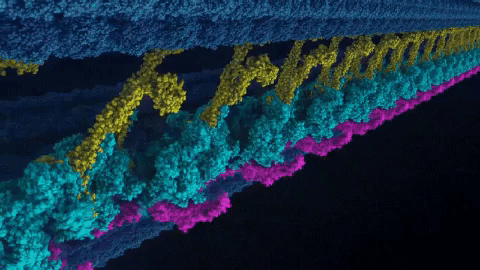Quest to depict CG sperm leads to real biological advances

An effort to make a 3D animated sperm for a short film has ended up producing a model of unprecedented detail and considerable scientific value. If you were ever curious what goes on inside those things, this is probably the best depiction yet.
It started when Don Ingber of Harvard’s Wyss Institute decided he wanted to show a biological process on screen that was accurate at the atomic level. Something like breathing or seeing is far too complicated, but sperm rushing towards and burying themselves in an egg is both simple enough and dramatic enough to work.
He joined up with Charles Reilly, also at Wyss but who formerly worked in film. They storyboarded it out, but stalled at animating the sperm’s long tail, with which it propels itself. There’s plenty of literature on how the tail works, but it had never been synthesized into a single model where what you saw at a macro level (the actual motion of the tail) was a direct result of what was happening at the atomic level (the molecular motors that make it move).
Armed with plenty of isolated knowledge, such as the atomic configuration of the long “axonemes” that make up the tail and the “dynein” molecules lined up between them, the known states the molecules transition between, and so on, the scientists concocted a model that fit all the evidence but was really its own unique vision of the process.
 The sum of all these atomic movements is what you actually see in the short. It’s interesting to watch, and also rather elegantly explicative of the rower-like motion in which the dyneins engage — and it has scientific value, to boot.
The sum of all these atomic movements is what you actually see in the short. It’s interesting to watch, and also rather elegantly explicative of the rower-like motion in which the dyneins engage — and it has scientific value, to boot.
Ingber explains it best in a quote from Wyss’s news release on the subject:
Not only is our physics-based simulation and animation system as good as other data-based modeling systems, it led to the new scientific insight that the limited motion of the dynein hinge focuses the energy released by ATP hydrolysis, which causes dynein’s shape change and drives microtubule sliding and axoneme motion.
Additionally, while previous studies of dynein have revealed the molecule’s two different static conformations, our animation visually depicts one plausible way that the protein can transition between those shapes at atomic resolution, which is something that other simulations can’t do. The animation approach also allows us to visualize how rows of dyneins work in unison, like rowers pulling together in a boat, which is difficult using conventional scientific simulation approaches.
Essentially, the work they did to make sure it looked right in the short actually seems to have advanced (or at the very least clarified, which amounts to the same thing) the understanding of exactly how it works in real life.
The final version of the film, “The Beginning,” you can watch below:
It’s strange, but also remarkable. I’m glad it was made.
“We’ve demonstrated that art and science can benefit each other in a truly reciprocal way,” Ingber said. “And we hope that this project spurs future collaborations with the entertainment industry so that both art and science can get even closer to depicting reality in ways that anyone can appreciate and enjoy.”
The film and the processes by which the scientists created it are documented in the journal ACS Nano.
Featured Image: Wyss Institute